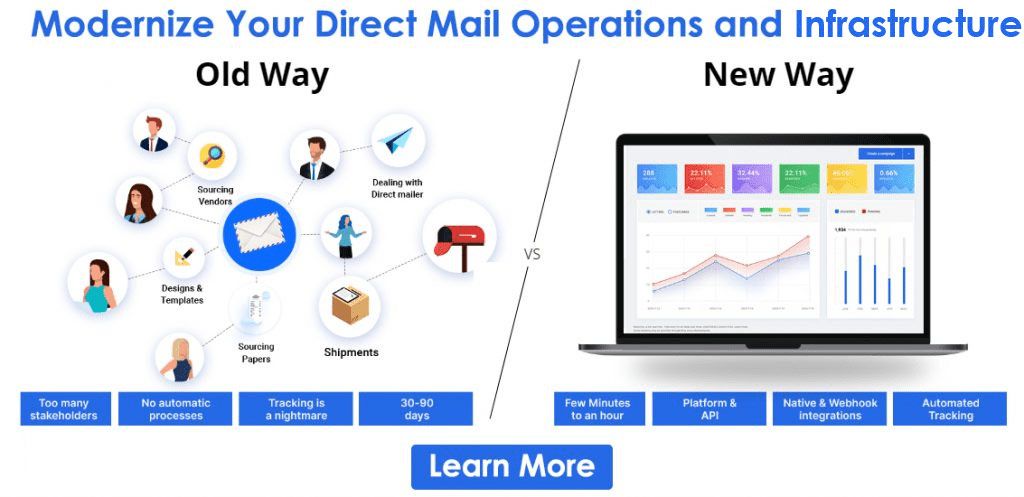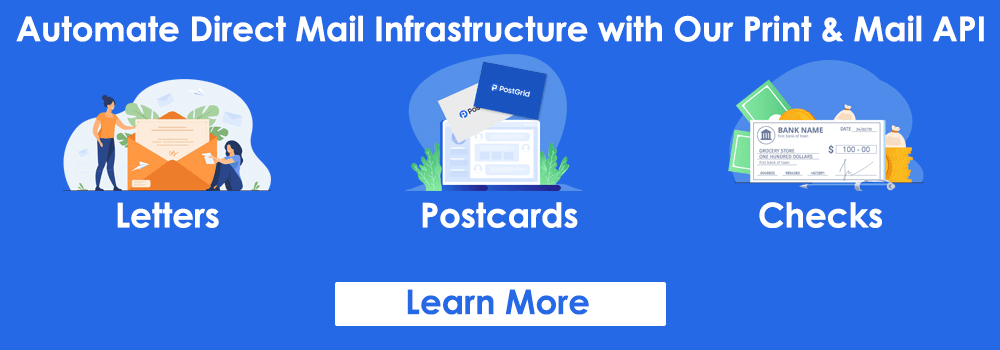How To Send An Envelope In The Mail
How To Send An Envelope In The Mail
We live in a technology-driven world today so much that it is almost impossible to escape it, not that any of us want to escape it. Perhaps communication is the one aspect of our lives that has drastically changed because of the technological advancements we have made over the years. Compared to the old written communication, the new ways are seemingly superior in every way imaginable, but that is not entirely true.

Although it is true that the vast majority of us no longer use postal mail as daily means of communication, we still send out Christmas cards every year. Why do we use it despite having so many different ways of reaching out to our loved ones? Because a Christmas card sent via postal mails is a sign of affection. The personalized touch of postal mail adds to its value. It is also appreciated for the thought and the effort put in by the sender.
Thus, in many ways, postal mails can never truly be replaced no matter how fancy the new technology is. If you pay attention, you will notice that businesses and companies still use postal mails because they still remain one of the most effective ways of communication. Businesses often send out important documents like bills and invoices via postal mails and also use them for sending out seasonal postcards as well.
However, even the businesses or companies that regularly often send out postal mails don’t always do it the right way. Sending out postal mail may seem easy, but the truth is that there are nuances that we often miss when sending envelopes via postal mail. Although postcards are an important part of business mails, they are usually seasonal. Typically the mail sent by businesses is sent inside an envelope, and in this article, we discuss envelopes from their different types to how you can address an envelope to the process of sending an envelope in the mail.
How to Mail off an Envelope With Proper Address
As far as the deliverability of your postal mail is concerned, the address is the single most important thing that you need to provide when sending an envelope. The complete will ensure that your post reaches the recipient without any unnecessary delays. In fact, it wouldn’t be a stretch if one were to say that the effectiveness of your operation/campaign that involves postal mails is entirely dependent on the quality of the address.
Luckily for businesses, today we have means to ensure that the addresses in your database are verified and validated. We now have access to advanced address verification tools that can verify that a given address is real and deliverable using USPS’s official address database. The USPS even has a certification program called CASS or Coding Accuracy Support System that lets you know whether the software is capable of accessing the USPS’s official address database for address verification.
A fine example of an advanced address verification tool is PostGrid, and it’s the ideal fit for businesses because it comes equipped with an easy and straightforward bulk address verification process. With advanced tools like PostGrid, all you need is a CSV file that contains all the addresses you want to verify or validate.
For the postal mails to reach their destination without any delays, it needs to be addressed correctly. For the address on the envelope to be considered complete, you need to provide more than just the addressee’s name and street address. Below we discuss all details you need to include in an address you provide on an envelope.
- Person/Business name
- Street Address
- City Name
- State
- Country (for international mails)
As you can see, the above details are not always available to us together. There are often mistakes or missing information on the data we have, and that is enough to cause a delay in receiving the postal mails you send. An advanced address verification tool like PostGrid can verify not only the address but also correct typos, add missing data, and even provide a full ZIP+4 code ensuring the deliverability of the mail.
Mistakes to Avoid When Addressing an Envelope
When writing the address on an envelope, there are certain mistakes that you need to avoid making to ensure your postal mails reach their destination at the earliest. One of the most common mistakes made while addressing an envelope is using a pencil for writing the address on the envelope. Using a pencil is not only the wrong professional but also very unprofessional, and businesses should avoid such silly mistakes at any cost.
Although it is not strictly speaking necessary to use capital or upper case letters when addressing an envelope, it is preferred because it can avoid any unnecessary confusion. This especially true in case you write the address on the envelope by hand. You should also try to avoid the use of punctuations when addressing an envelope. Using the upper case/capital letters and avoiding punctuations are two effective ways of improving the readability of your letter.
Another mistake you must avoid when addressing an envelope is using any name of the addressee that is different than his/her full legal name. This is to ensure the accuracy of the address as it can be used to check against USPS’s address databases. You must also make it a point to use the proper and accurate abbreviations for the streets, apartments, states, etc. Using the abbreviated form is the standard format for USPS mails and it helps speed up the process.
It is important to understand that not standardizing the address on your envelope will not stop your postal mail from reaching its destination. However, not standardizing the address may end up causing unnecessary delays in its delivery. As far as businesses are concerned, any sort of delay is undesirable as they could disrupt a streamlined business operation. The standardized addresses are easily processed by the USPS, and it ensures the timely delivery of postal mails without getting them lost, returned, or delivered to the wrong address.
How to Send Envelope in Mail for All Sizes
As we all know, envelopes come in different sizes and shapes. They are usually used for different purposes, and depending on the size, the price for sending different size envelopes may also vary. Before we discuss the different types of envelopes you can send through USPS, and their characteristics, let’s take a look at the steps involved in mailing an envelope regardless of its size.
The first thing you need to do before sending an envelope via mail is to make sure that the envelope is properly sealed and secured. Make sure that you write the address clearly in the middle of the envelope, and similarly, write your (sender’s) address on the top left corner of the envelope. Also, remember that you should not use a pencil to write the address on the envelope. Finally, you can paste the appropriate postage on the top right corner of the envelope.
Once you have accurately addressed the envelope, all that is left to do is give it to the USPS for delivery. There are a number of ways you can post mails through the USPS, you can either put the envelope in a USPS mailbox or have them sent through a different mail carrier, or you could even take it to the nearest post office. The basics of sending an envelope by mail may seem rather simple and straightforward, but it gets more complicated as we consider different types of envelopes.
Some of the envelopes you send may be small or large or maybe just strange looking. Below we discuss the different types of envelopes, their dimension, and the points to remember while sending an envelope in the mail.
Large Envelopes
Let’s begin with the large envelopes. They are also known as “flats,” and they are often used for sending out magazines, CDs, brochures, legal documents, and other such documents. They are ideal for sending important documents as you can keep them inside without having to fold the document, and they can easily fit 8½ x 11 size papers. Below given are the dimensions permissible for an envelope to not be treated as a large envelope.
| Height | Length | Thickness |
|---|---|---|
| 6⅛″ | 11½″ | ¼″ |
Any envelope you post through the mail that exceeds the dimensions shown above is classified as a large envelope by the USPS. The actual mailing process of the large envelopes is pretty much like any standard USPS delivery as long as your envelope has the appropriate postage on it. As discussed above, address the envelope in the standard format and ensure the correct position of the destination and return addresses.
It is also worth noting that any envelope that is larger than 12” in height, 15” in length, ¾” in thickness, or 13 oz in weight is treated as a parcel by the USPS, and you will be charged the corresponding parcel price of the weight of the mail.
Clasp Envelopes
We have all come across envelopes with clasps and at least some of us have felt that they were special because of the clasps. Well, if you did think that, then let me congratulate you on being right ages ago. What makes clasp envelopes special is that that they are considered non-machinable, and they have to be hand-canceled. This also means that you will have to pay a non-machinable surcharge for such envelopes, and this surcharge applies even if the clasp envelope weighs less than 1 oz.
However, if you are stuck with a clasp envelope and you also want to avoid paying the non-machinable surcharge, there is a simple hack you could use. You can simply put the clasp envelope inside a regular or non-clasp envelope and avoid paying the surcharge. Regardless of whether you decide to pay the surcharge or use the hack to avoid it, you must still use the standardized addressing format we have already mentioned above.
Conformer Envelopes
Not all of us may be familiar with the term conformer envelopes, although we may have seen or even used it. They are used for sending heavy, large, and important items via the mail, and hence they are made more sturdy than regular envelopes. More often than not, the conformer envelopes are used for sending items with firm and sharp corners that can easily tear through the regular envelopes. They are also the ideal choice for sending fragile and unbendable items.
The conformer envelopes are also popular for sending large items as many of them can easily fit inside them, and you can avoid paying the added shipping costs that would have otherwise incurred had you used a mailed item in a box. Furthermore, the conformer envelopes are made of stiff paperboard and they are capable of expanding, allowing you to fit in more items or documents inside it.
The built-feature of conformer envelopes with its secure seal makes conformer envelopes perfect for sending books. The sharp corners of books can not tear through them and keeps the package secure at all times, even if it is heavy. Similar to the other envelopes, the mailing process is pretty straightforward for conformer envelopes too.
However, there are few things you should be aware of when using conformer envelopes. First of all, you need to ensure that the envelope is tightly sealed, especially if you are sending a particularly heavy item. The conformer envelopes have a glossy texture, and hence it is best if you use a sharpie for writing the address as they are clear and permanent. It is also ideal to find the postage charge directly from the post office as it may change depending on the thickness and weight of the mail. Furthermore, going to the post office is also ideal if your post is big and can’t fit inside the mailbox.
Remittance Envelopes
Remittance envelopes, as the name suggests, are most commonly used for sending or receiving money, mostly in the form of charitable donations. As these envelopes deal with the transfer of money, they come with an extra flap that you can use to write down any relevant sender information. This flap can be folded up and secured inside before sealing the envelope.
You can either use a pre-paid postage or paste a standard letter stamp in the top corner of the envelope. Most of the remittance envelopes come with the address of the destination printed on them, and if not, you need to have the address filled out (obviously!) The same goes for the return address, and since it involves sending money, you must always provide a return address unless you are okay with losing your money.
Conclusion
Sending an envelope by mail is easier said than done, and even though the process is relatively simple, there are a lot of nuances involved in it that often go unnoticed. Perhaps the most demanding challenge businesses face in sending direct mails is having accurate and standardized addresses. Having verified and standardized addresses enable you to streamline your numerous business operations. This can be easily accomplished through an advanced address verification tool like PostGrid.
Another challenge businesses face confusion when faced with the question “how to send an envelope in the mail?” is the different types of envelopes and their addressing formats. You could either ensure this manually using the guideline that we have provided above or make use of a smart solution like PostGrid. The advanced system of PostGrid not only allows you to bulk verify your addresses but also uses it to automate the entire mailing process, including the printing and mailing processes saving you valuable time and resources.
Ready to Get Started?
Start transforming and automating your offline communications with PostGrid
The post How To Send An Envelope In The Mail appeared first on PostGrid.
Via https://www.postgrid.com/how-to-send-an-envelope-in-the-mail/
source https://postgridplatform.weebly.com/blog/how-to-send-an-envelope-in-the-mail
source https://irenevines.tumblr.com/post/648746468805623808



Comments
Post a Comment